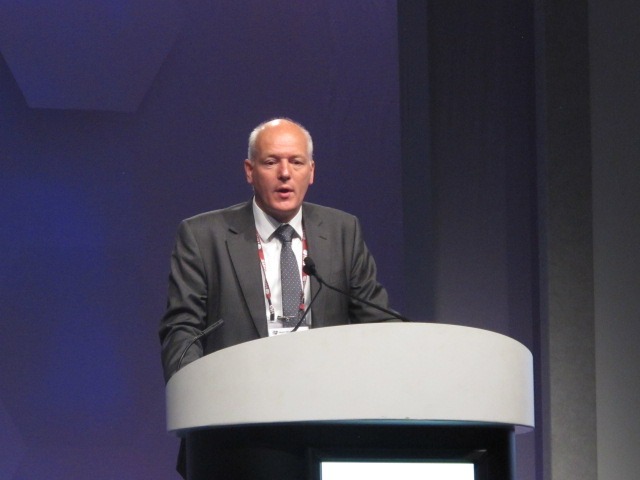
Left atrial appendage closure with the Watchman device (Boston Scientific) is safe and effective at stroke prevention, with a high implant and sealing success, even in patients that are contraindicated to and not using oral anticoagulants, one-year follow-up of the EWOLUTION trial has shown.
Findings from the prospective single arm multicentre registry of the Watchman device were announced at the Heart Rhythm Society’s 38th Annual Scientific Sessions (10‒13 May, Chicago, USA). The study objective was to collect real-world Watchman LAA occlusion experience.
Lead researcher Lucas VA Boersma, of St Antonius Hospital, in Nieuwegein, Netherlands, said: “Previous randomised controlled trials were done in patients that do not have contraindications to warfarin therapy, and everyday real-life practice is different. In Europe, this therapy is recommended by ESC [European Society of Cardiology] guidelines, primarily in patients that do have contraindications, and have no other option for this therapy. With this in mind, we developed a prospective registry, the EWOLUTION trial, looking at real-world experiences, outside of selected populations in prior randomised controlled trials.”
More than 1,000 patients scheduled for a Watchman implant were prospectively and sequentially enrolled at 47 centres throughout Europe, Russia, and the Middle East between October 2013 and May 2015. Indication for LAA closure was based on ESC guidelines. Follow-up and transoesophageal echocardiography (TEE) were performed as per local practice, usually between one and three months post procedure, and patients were seen at the first follow-up, and annually thereafter for up to two years. Primary endpoints included procedural success and safety, incidence of stroke, and death and bleeding after two years of follow-up. Loss to follow-up was primarily because patients were deceased.
Boersma explained: “This was a population with comorbidity, more comorbidity than we are probably used to. Patients were usually old; they had hypertension, sometimes congestive heart failure and diabetes. Stroke, both haemorrhagic and ischaemic, was present in 35% of these patients, and there was also vascular disease. And, 73% were contraindicated to the use of oral anticoagulation. This population has a higher risk both of stroke and bleeding.”
Implant success was 98.5%, with first device release successful in 71.3% of patients. In an improvement on previous trials, 93.5% of patients only had to use one device, and 99.5% of patients had a complete closure or a jet smaller than 5mm, which is considered to be successful. This effect was retained over the first follow-up period in 99% of the patients. In addition, 78% of operators had less than two years’ experience with the device, and performed 75% of study procedures.
Boersma said: “The most important thing is stroke rate, because that is the main reason why we implant this device. If we look at this population, the expected stroke rate based on CHA2DS2 VASc scores was 7.2% and the observed in EWOLUTION was 1.1%, giving a relative risk reduction of 84%. For bleeding, which is obviously also important—when we implant this device we want to reduce bleeding—the expected bleeding risk based on HASBLED scores was 5%, if these patients had used oral anticoagulation, and the actual major bleeding rate was 2.6%. Excluding the procedural bleedings, the expected rate was 5% and the actual rate at follow-up was 2.3%, a 54% risk relative reduction.”
No differences in death, stroke, or bleeding rates were observed between patients with and without a contraindication for anticoagulation.
“I think that [the findings are] very encouraging in the general group of patients that were implanted with this device. If we look at the one-year follow-up we see that most of the patients were only on antiplatelet therapy or no anticoagulation. Device thrombus was 3.7%, in line with prior trials. These are important data that show Watchman stroke reduction is safe and effective, specifically given the fact that more than 70% of these patients were contraindicated for oral anticoagulation.”












